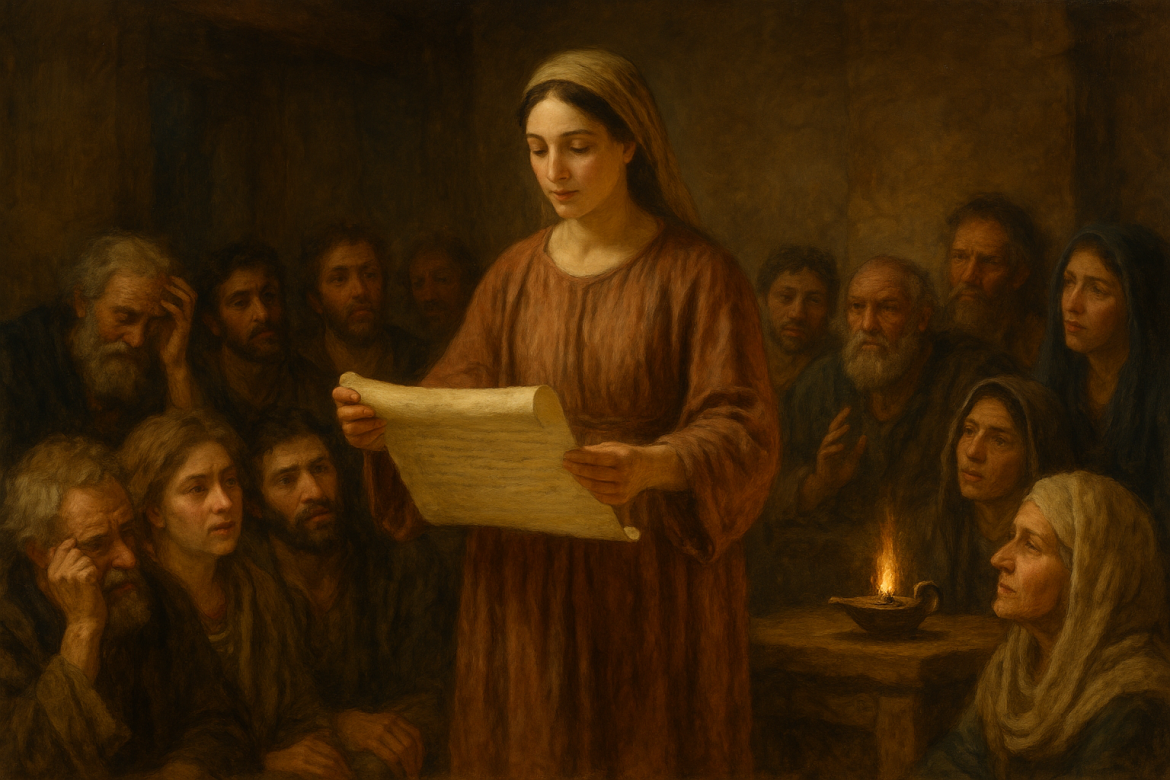Introduction: Why Romans Still Matters Today
In a world full of conflicting ideologies, moral confusion, and spiritual searching, the Book of Romans remains one of the most powerful and relevant writings in the Bible. Written nearly 2,000 years ago, this theological letter penned by the Apostle Paul is still shaping Christian doctrine, inspiring spiritual transformation, and fostering unity in divided communities. Whether you’re new to faith or have been studying Scripture for years, Romans invites readers to understand the Gospel more deeply, embrace the righteousness of God, and live in harmony with one another.
Life in Ancient Rome: The Cultural and Religious Context
Romans was written around 57 A.D., during the early reign of Emperor Nero. At the time, Rome was the bustling capital of the world, a center of politics, culture, economy, and philosophy. Citizens of all walks of life—soldiers, merchants, slaves, philosophers—filled its crowded streets. While Rome allowed worship of many gods and absorbed various religious practices, loyalty to the emperor was non-negotiable. New religious movements, like Christianity, were often viewed with suspicion if they threatened imperial unity.
Christianity initially flew under the radar, perceived as a sect of Judaism, which was legally tolerated. But as Gentiles began joining in large numbers and the faith grew beyond Jewish boundaries, tensions increased. Jewish Christians had been expelled from Rome under Emperor Claudius in 49 A.D., and upon returning after his death, they found a very different church—one shaped and led by Gentile believers. This cultural and theological clash caused deep divisions, even over simple things like food laws and Sabbath observance.
Why Paul Wrote Romans
Unlike some of his other letters, Paul didn’t write Romans to correct a specific crisis. He hadn’t founded the church there and had yet to visit. Instead, he wrote to clarify the Gospel, encourage unity, and prepare the church for future challenges. Paul’s aim was to present a clear and complete explanation of salvation through faith in Christ. He wanted to equip believers with the tools to withstand growing opposition and misunderstandings, both from within and outside the faith.
Paul also had practical goals. He hoped the Roman church would become a launchpad for his mission to Spain. But to do that, the church needed to be united, spiritually mature, and clear about its identity.
The Heart of the Gospel: All Have Sinned, All Are Welcome
Romans builds a case like a legal argument. Paul starts by stating the universal problem: all people—Jews and Gentiles alike—have sinned and fall short of God’s glory (Romans 3:23). No one is righteous on their own merit. The solution is not found in the law, heritage, or good works but through faith in Jesus Christ. This levels the playing field: no one can boast, and all can receive grace.
Romans 10 emphasizes this further: “There is no difference between Jew and Gentile—the same Lord is Lord of all.” This would have been a radical message in a society built on social and religious divisions. Paul was calling for a new kind of community—one not defined by race, status, or tradition but by shared faith.
Misunderstood Grace: Not a License to Sin
One of the most profound themes in Romans is grace. But Paul anticipated pushback. Some thought this meant they could sin freely because forgiveness was guaranteed. Paul shuts this down directly in Romans 6: “Shall we go on sinning so that grace may increase? By no means!” Grace is not an excuse for immorality—it’s the power to live a transformed life. Paul gives believers language to respond to critics and internal doubts, reinforcing that God’s forgiveness leads to righteousness, not rebellion.
Preparing for Persecution and Future Mission
Though outright persecution hadn’t started, Paul saw the writing on the wall. He knew the Roman Christians would face trials. He wanted them to be rooted deeply in their faith and to know that suffering didn’t mean they had failed. Instead, it could be part of their witness.
He also saw the strategic potential of Rome as a missionary base. If the church there could embrace unity, clarity, and strength, it could be a lighthouse to the rest of the empire—and beyond.
Small Churches, Big Impact
There were no cathedrals or church buildings in Rome at the time. The church consisted of house gatherings—small groups of believers meeting in homes, likely no more than 20 or 30 people at a time. Phoebe, a trusted associate of Paul, delivered the letter and likely read it aloud in these settings. She may have been the first person to publicly teach from Romans—a reminder that leadership and theology are for all who are called.
Each group—rich and poor, Jew and Gentile, slave and free—needed to hear the message of one Gospel, one Messiah, one body. Unity wasn’t just idealistic—it was essential.
Legacy of the Letter
Romans has influenced some of the greatest figures in Christian history, including Augustine, Martin Luther, John Wesley, and John Calvin. It continues to be one of the most studied and quoted books in the Bible. Its depth, structure, and clarity make it a theological treasure.
More than that, it’s a practical guide for life. It teaches how to live by faith, walk in the Spirit, and treat others with love and grace. Paul’s message is as urgent now as it was then: be transformed by the renewing of your mind and live as one unified body in Christ.
Conclusion: One Gospel, One Body
Romans calls believers to unity, humility, and deep faith. It doesn’t shy away from hard truths but presents them with grace and hope. Whether in the grand halls of ancient Rome or the small churches of today, the message remains the same: all have sinned, all can be saved, and all are called to live in the freedom and unity that Christ provides. As we begin reading Romans, may we listen with open hearts and respond with lives that reflect its truth—one small step at a time.

